The woman with the impossible waist: how Betty Brosmer inspired Billie Eilish
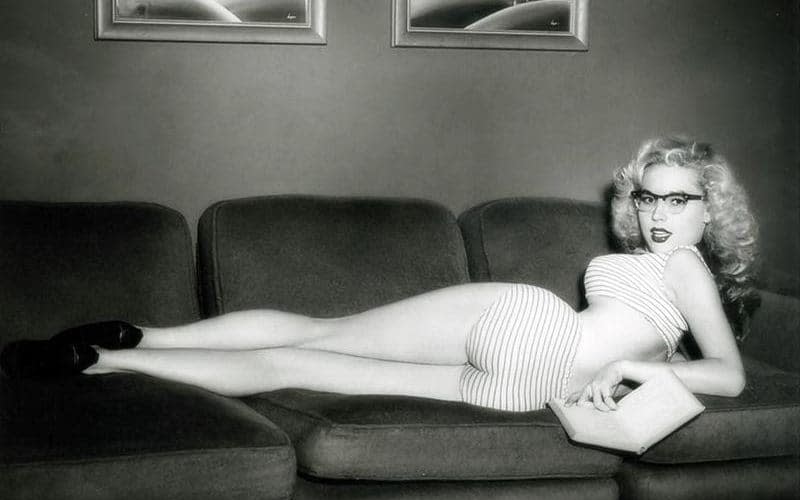
- Oops!Something went wrong.Please try again later.
- Oops!Something went wrong.Please try again later.
- Oops!Something went wrong.Please try again later.
- Oops!Something went wrong.Please try again later.
Billie Eilish’s uncharacteristically sultry, cleavage-bearing photoshoot for this month’s British Vogue, timed to introduce her new, blonder look to the world for the release of forthcoming album Happier Than Ever, has inspired a rash of internet opinion. Some say she has betrayed her young female fans by abandoning her baggy-jumpered, green-haired two-fingers to normative patriarchal beauty standards; others say it’s her body, her choice, and no one’s business but her own; while still others accuse Vogue of pressuring her into the look. (Although in the interview, Eilish stresses that the shoot was entirely her idea.)
At heart, this is a debate about the female body and who derives power from it: is the woman with the confidence to show it off and enjoy the sensation of being alive in her own skin, or is it the men who see it, salivate over it, and treat women more like objects and less like people because of it? The career of Betty Brosmer, Californian pin-up and supermodel of the Fifties who Eilish cites as an inspiration for her new look, might provide one answer.
Known for her exaggerated hourglass figure (she was nicknamed “the impossible waist”), photographs of Brosmer papered the walls of bedrooms and offices across America when Marilyn Monroe was still chorus dancing in small-budget studio comedies.
She was born in Pasadena but got her first modelling gig in New York, for the department stores Sears & Roebuck, at the age of 13. Soon, she caught the attention of celebrated pin-up photographers Alberto Vargas and Earl Moran, and, two years later in 1950, she moved permanently to New York with her aunt to spend her teenage years modelling for men’s magazines, including Modern Man, Photo, and People Today.
Her image appeared in advertisements everywhere from milk cartons to billboards, and on the covers of popular pulp romance novels; she won numerous beauty contests, including Miss Television, for which she was photographed on top of the Empire State building for the cover of TV Guide.
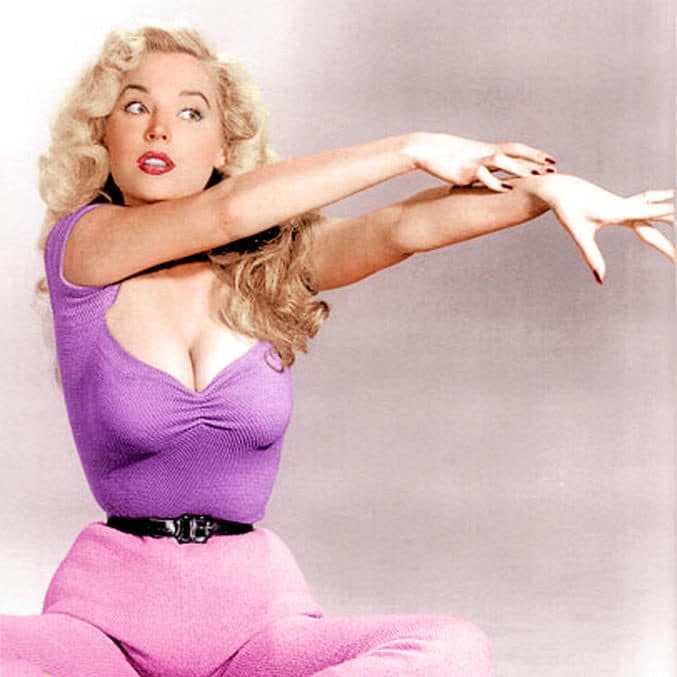
Her success was immediate and vast (in one particular month, she appeared on the cover of eight different national magazines). By the time she left New York for Hollywood at the age of 18, her departure warranted a mention in the famous gossip column of Walter Winchell. Back on the west Coast, she continued her run of work with celebrated contemporary photographers by entering into a lucrative contract with Keith Bernard, who was already working with models like Monroe and Jayne Mansfield, while also studying for a Psychology degree at UCLA.
Their decade-long collaboration, for which she frequently featured on the covers of Modern Man, Photoplay, and Rogue, saw Brosmer become the highest-paid model in the country. According to Steve Sullivan, who profiled Brosmer in his biography of Fifties pin-up girls Va Va Voom, she was seen in “virtually every men’s magazine of the era.”
While the success of her image is undeniable, the question of whether it will have a positive impact on the thousands of young women currently poring over the pictures of Eilish-as-Brosmer is slightly more complicated.

Her extraordinary figure was, some believe, achieved by a process of invasive corseting (known as waist training or tightlacing) from a very young age. This process alters the shape of the ribcage to narrow the waist and can, in extreme cases, move internal organs out of position.
But this is pure speculation: others think it's more likely that Brosmer simply accentuated her natural curves by building the muscles in her hips, legs and ribs, making her waist look even smaller by comparison. Canny use of lighting and angles in original photographs of her, plus airbrushing, may also have distorted her shape.
Given the ubiquity of her image, it is difficult to argue that she did not contribute to the normalisation of unattainable beauty standards, a fact that jostles uncomfortably up against Eilish’s contention that her new look “makes her feel more like a woman.” The nature of the era and the industry that Brosmer worked in, and the age she was when she began, must also have left her particularly vulnerable to undesirable male attention.
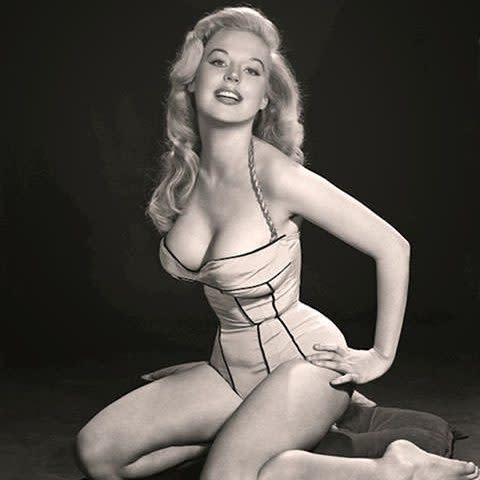
Nothing is known of any personal ordeals she may have had to contend with, but she has spoken candidly about the process of premature sexualisation she was forced to undergo as a teenage model. “When I was 15, I was made up to look like I was about 25,” she said.
But such problematic elements of her story do not adequately capture Brosmer’s political impact. She is generally believed to be the first high-profile model to own the rights to all her own images and to receive remuneration every time one is used, making her a pioneer for sexual equality on a par with other women in the mid-century entertainment industry like Diana Rigg who fought for fair pay.
There was also the famous shoot for Playboy which it refused to use and threatened to sue Brosmer for breach of contract after she declined to take her clothes off (instead, she wore a low-cut bra). Speaking about the experience, Brosmer said: “I didn’t think it was immoral, but I just didn’t want to cause problems for others… I thought it would embarrass my future husband and my family.”
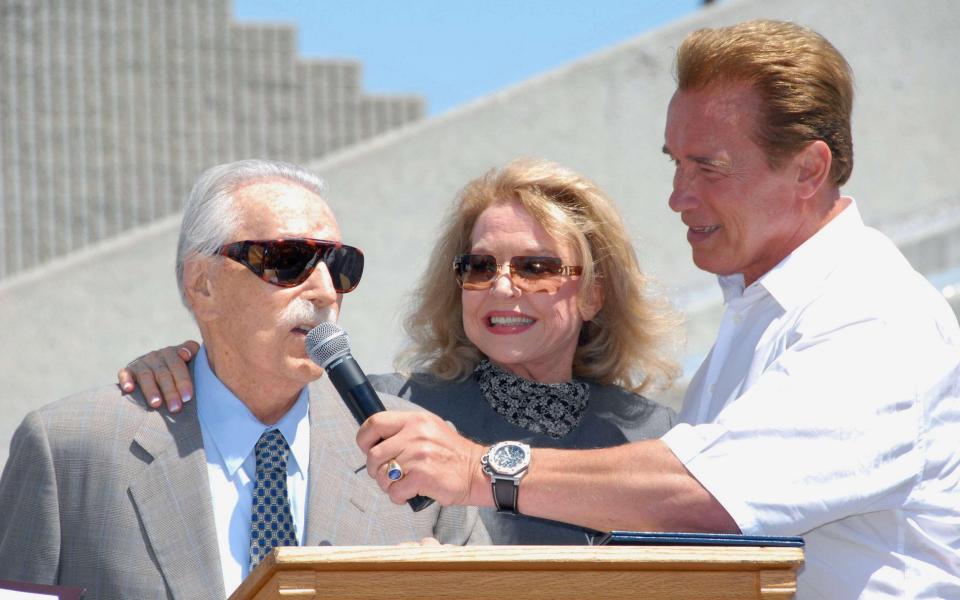
The second act of Brosmer’s career focussed on health over beauty. After her marriage to Joe Weider, the Canadian bodybuilder and magazine publisher, she began to write regular columns about bodybuilding and fitness for Muscle and Fitness (“Body by Betty” and “Health by Betty”), focussing on workouts, nutrition, and stress reduction, as well as modelling for his fitness programmes and products (often with Arnold Schwarzenegger, who became a close friend of the couple).
She also worked as an associate editor for Shape, a female-oriented fitness magazine co-founded in 1981 by Wieder and bodybuilder Christine MacIntyre, which soon became the biggest women’s fitness magazine in America. Under MacIntyre’s steerage, Shape pursued an editorial line that concentrated on health over beauty, and medical science over more commercial features.
She insisted, for instance, that the cover girls look healthy, as well as sexy; extreme thinness, and the kind of waistline that Brosmer popularised, has never been a feature of Shape’s models. By her own description, Brosmer’s contribution to Shape was the priority of evidence-based information. “Tell the truth. Give women something they can believe. Be honest and help women create an integrated lifestyle of health, fitness and nutrition, based on reliable information” declares her website. When MacIntyre died tragically in a car accident, Brosmer stayed on to ensure her legacy.
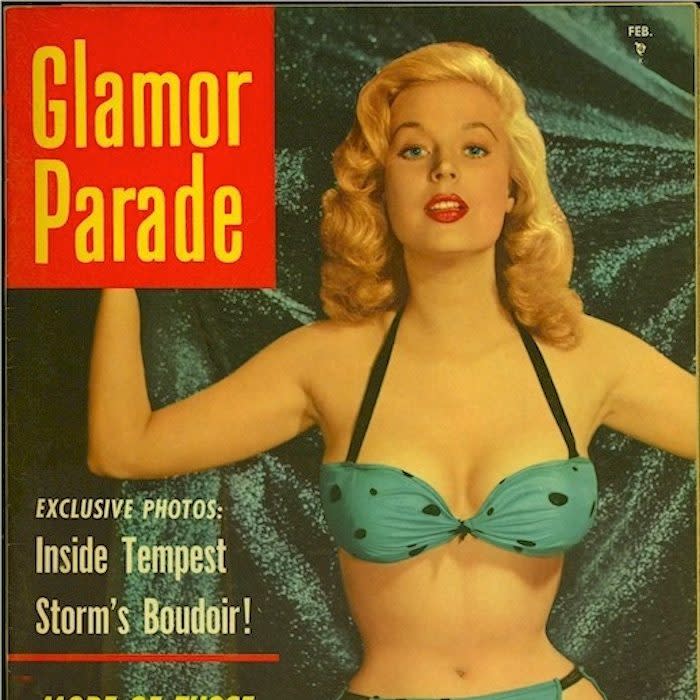
Today, at the age of 86, Brosmer continues to write, model, and construct a legacy more complicated than the term pin-up girl might initially suggest. Like Eilish herself, her impact on women cannot be easily packaged up into politically-digestible lines.
Being a female role model, her career suggests, is never easy – and perhaps that more than anything should be the takeaway from Eilish’s new look.

